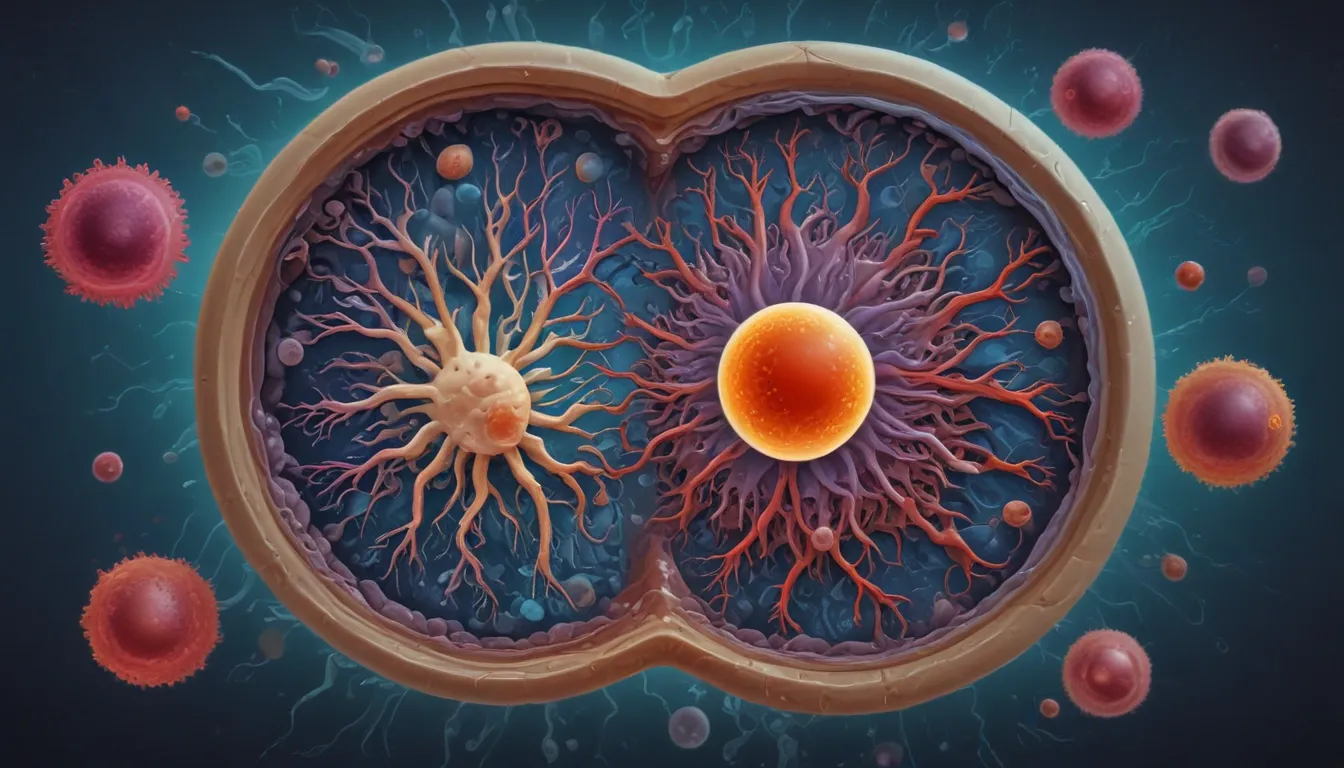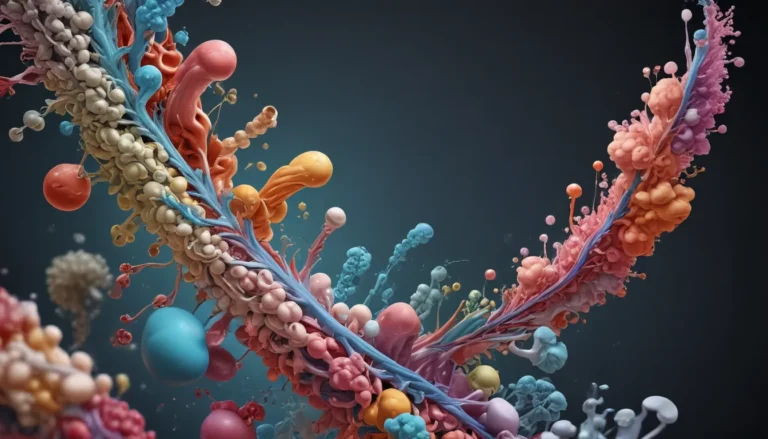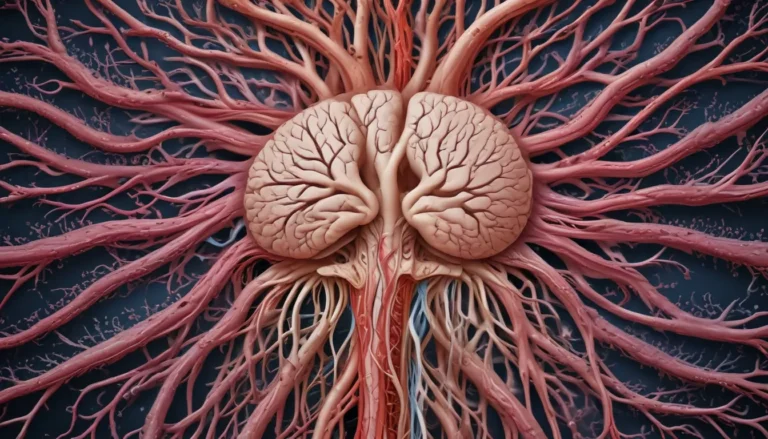A Note About Images: The images used in our articles are for illustration purposes only and may not exactly match the content. They are meant to engage readers, but the text should be relied upon for accurate information.
Cell senescence, a captivating process where cells lose their ability to replicate and function properly, is a key aspect of aging biology. While often associated with aging, senescent cells can also emerge due to factors such as DNA damage, stress, and inflammation. Exploring the extraordinary facts surrounding cell senescence reveals a world of secrets waiting to be discovered.
The Intriguing Nature of Cell Senescence
Cell senescence is a natural phenomenon that occurs as cells age. It is a process where cells cease to divide and proliferate, leading to a state of growth arrest. Triggered by various factors like DNA damage, oxidative stress, telomere shortening, and oncogene activation, cell senescence plays a critical role in aging and age-related diseases.
Understanding the Impact of Cell Senescence
Senescent cells can have both positive and negative effects on the body. While they can act as a protective mechanism by preventing the proliferation of damaged cells and potentially inhibiting tumor formation, they can also contribute to tissue dysfunction and the development of age-related diseases. Identifying senescent cells is possible through specific markers like p16INK4a, p21CIP1, and SA-β-gal, offering insights into their presence and impact in different tissues.
The Promise of Therapeutic Targeting
Efforts to target cell senescence through senolytic drugs have shown promise in research. These compounds specifically eliminate senescent cells, offering potential for delaying or even reversing age-related conditions by removing accumulated senescent cells. While cell senescence is traditionally viewed as irreversible, recent studies have suggested new possibilities for reversing the process under certain conditions.
Genetic and Environmental Influences on Cell Senescence
The interplay between genetic and environmental factors influences the process of cell senescence. Genetic predispositions can impact cell senescence, while external factors like stress, lifestyle choices, and toxin exposure can accelerate the process. Understanding the complex interactions between these factors is essential in comprehending the mechanisms behind cell senescence.
The Therapeutic Potential of Targeting Cell Senescence
Given its significance in aging and age-related diseases, targeting cell senescence has emerged as a promising therapeutic strategy. Developing interventions to modulate or eliminate senescent cells could pave the way for innovative treatments for age-related conditions such as cancer, neurodegeneration, and cardiovascular diseases.
Unveiling the Future of Cell Senescence Research
As researchers continue to unravel the mysteries of cell senescence, new insights into its mechanisms and implications provide valuable information for future therapeutic approaches. From the discovery of cell senescence by Leonard Hayflick to the identification of the SASP, significant progress has been made in understanding this complex biological process.
Exploring Related Topics
Delving into the realm of cell senescence sparks curiosity about interconnected topics such as DNA damage and repair mechanisms, oxidative stress, and antioxidants. Each subject offers a unique perspective on the intricate tapestry of life, inviting readers to embark on a journey of scientific exploration and understanding. By exploring these interconnected themes, readers can gain a more comprehensive view of the biological processes shaping our health and well-being.
FAQs: Addressing Common Queries
-
What is cell senescence?
Cell senescence is a state of irreversible growth arrest that occurs in cells as they age or in response to stress and damage, characterized by changes in cell morphology and gene expression. -
How does cell senescence contribute to aging?
Cell senescence accumulates in tissues over time and is believed to contribute to the aging process by impairing tissue regeneration, promoting inflammation, and increasing the risk of age-related diseases. -
Can cell senescence be reversed?
Recent research has shown that it is possible to reverse senescence in certain circumstances through interventions such as senolytic therapies, challenging the traditional view of its irreversibility. -
What is the role of telomeres in cell senescence?
Telomeres, repetitive DNA sequences at chromosome ends, act as protective caps. As cells divide, telomeres shorten, triggering cell senescence once they reach a critically short length. -
Are all senescent cells harmful?
While senescent cells can have beneficial effects by preventing damaged cell proliferation, they can also secrete harmful factors contributing to tissue dysfunction and age-related diseases. -
Can senescent cells be targeted therapeutically?
Researchers are actively exploring senescence-targeted therapies, such as senolytics, to eliminate senescent cells selectively for tissue rejuvenation and overall health enhancement. -
Can lifestyle factors influence cell senescence?
Yes, factors like chronic stress, poor nutrition, sedentary lifestyle, and toxin exposure can accelerate cell senescence, emphasizing the importance of a healthy lifestyle for cellular health. -
Can cell senescence be used as a biomarker for aging?
Yes, the presence of senescent cells and senescence-associated biomarkers can serve as useful indicators of biological aging and risk for age-related diseases.
In conclusion, the intricate world of cell senescence offers a fascinating glimpse into the aging process and its implications for health and disease. As researchers uncover more about the mechanisms underlying cell senescence, new opportunities arise for targeted interventions and treatments. By embracing the knowledge of cell senescence, we can strive towards a healthier and more vibrant future, nurturing a deeper understanding of the biological processes that shape our lives.
Our commitment to delivering trustworthy and engaging content ensures that each fact on our site is contributed by real users, guaranteeing a diverse range of insights and information. Trust in our dedication to quality and authenticity as you explore and learn with us.





